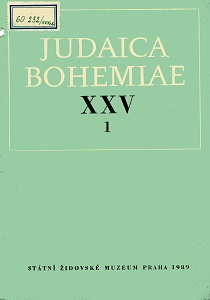März 1939 — Schicksalsgrenzstein in der Historie der TschechoslowakeI
March 1939 - a landmark in the history of Czechoslovakia
Author(s): Otakar PetrikSubject(s): Military history, Government/Political systems, Interwar Period (1920 - 1939), WW II and following years (1940 - 1949), Fascism, Nazism and WW II, History of the Holocaust, History of Antisemitism, Peace and Conflict Studies
Published by: Židovské Muzeum v Praze
Keywords: Formation of Czechoslovakia; Impact of Nazi Germany; end of Czechoslovakia’s independence;
Summary/Abstract: The document discusses the history of Czechoslovakia, highlighting its establishment post-World War I and its development into a democratic state with a strong industrial and agricultural base. It details the impact of the global economic crisis of the 1930s, the rise of Hitler's power in Germany, and the subsequent threat to European stability and Czechoslovakian statehood. The Munich Agreement of 1938 is described as a betrayal, leading to the annexation of Czechoslovakia by Nazi Germany in March 1939 and the onset of severe persecution and oppression, including the closure of cultural institutions and forced labor. The document also covers the broader context of World War II, the support of fascist forces in Spain, Italy's invasion of Ethiopia, and the eventual turning point in the war with the help of Allied forces, leading to the liberation of Czechoslovakia in 1945. It concludes with the post-war recovery and the preservation of cultural heritage, including Jewish monuments and children's drawings from Theresienstadt, serving as a reminder to prevent the recurrence of such tragedies.
Journal: Judaica Bohemiae
- Issue Year: XXV/1989
- Issue No: 1
- Page Range: 3-5
- Page Count: 3
- Language: German
- Content File-PDF

